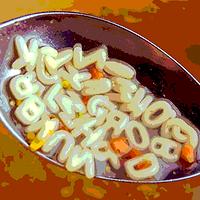HACCP vs. HARPC: A Comparison

HACCP (Hazard Analysis and Critical Control Points) and HARPC (Hazard Analysis and Risk-Based Preventive Controls) share more than just four letters. They’re both food safety standards based on prevention, but they do differ on execution. Their differences and the similarities aren’t as important as the way they fit together for most food processors. A HARPC plan shouldn’t be considered as a replacement but as a necessary upgrade to the conventional HACCP plan. Understanding how the systems fit together is the first step toward implementing both.
 HARPC as an Upgrade to HACCP
HARPC as an Upgrade to HACCP
HACCP is already widely used due to requirements from retailers, auditing standards, and inspectors, though USDA and FDA only mandate it for meat, seafood and juice products. As a global standard conceptualized the 1960s, HACCP has been continually developed and updated. HACCP requires a multi-disciplinary team for implementation and follows prescriptive steps.
HARPC covers food safety concerns beyond CCPs and is mandated by the FDA for most facilities, with some exemptions. Instead of only looking at process steps where controls can be applied (as in HACCP plans), HARPC relies on the applicable FDA regulations, standards, and guidance documents to develop a Preventive Controls Plan.
How HACCP Works
HACCP is a globally recognized risk-based preventative approach recommended by the Codex Alimentarius Commission (or the ‘Food Code’) and the National Advisory Committee on Microbiological Criteria for Foods. It commonly focuses on controlling the three main food safety hazards: biological, chemical and physical. The primary goals (in order of priority) are to prevent occurrences of the hazard, or eliminate, or reduce the food safety hazard to acceptable or safe levels.
The HACCP plans are developed, implemented, and maintained by a multi-disciplinary team and the entire process is facilitated by a HACCP Coordinator, a person who is sufficiently knowledgeable and skilled in food safety concepts and principles and has undertaken a training program that has preferably been accredited by the International HACCP Alliance. The responsible person must review the HACCP plan at least annually, or whenever there are significant changes in food safety design layout, processes, product composition or technology.
The HACCP program is legally mandated for meat and poultry establishments (under USDA jurisdiction) and juice and seafood processing establishments (under FDA’s jurisdiction). Even though the HACCP program for several food establishments may be voluntary (unless specified by regulations, industrial standards, or by customers), it does not absolve a facility from implementing Current GMPs (as provided in the 21 CFR 110 legal document) and other relevant prerequisite program requirements necessary to maintain the safety and legality of the food products. In the Food Code, prior to HACCP recommendation, there are General Principles of Food Hygiene (provided in 10 sections) that have to be followed. Auditors, inspectors, customers and other stakeholders may inspect the HACCP or food safety plan.
12 Steps of HACCP
1. Assemble the multidisciplinary HACCP team
2. Describe the product
3. Identify its intended use
4. Construct a flow diagram
5. Conduct on-site confirmation of the flow diagram, and draw up the plant schematic
6. List all potential hazards associated with each step, conduct a hazard analysis, and consider any measures to control identified hazards (Principle 1)
7. Determine Critical Control Limits (Principle 2)
8. Establish Critical Limits for each CCP (Principle 3)
9. Establish a monitoring system for each CCP (Principle 4)
10. Establish corrective actions (Principle 5)
11. Establish verification procedures (Principle 6)
12. Establish documentation and record-keeping (Principle 7)
How HARPC Works
In brief, this preventive control system mandated by FSMA is to be implemented by all food establishments unless specifically exempted. Thus, it applies to food facilities in the U.S. that manufacture, process, pack, distribute, receive, hold or import food, and for those firms exporting foodstuff to the U.S. FDA has issued implementation deadlines for each of the different facility types (kindly refer to updated guidelines on the FDA site, www.fda.gov). Within a HARPC plan, the food safety hazards assessment is broader; generally, the following risks are considered:
• Biological, physical, chemical and radiological hazards
• Natural toxins, pesticides, drug residues, decomposed material, parasites, allergens and unapproved food and color additives
• Naturally occurring hazards
• Unintentionally introduced hazards
• Intentionally introduced hazards, including acts of terrorism
Preventive controls are science-based and shall be adequate to significantly minimize or prevent identified hazards “known or reasonably foreseeable” for each type of food subject to the relevant FDA regulation. The HARPC plan is developed, implemented, and maintained by a team of “preventive controls qualified individuals” as defined in FSMA, who have been trained or are sufficiently conversant with the Preventive Controls for Human Food rule, and any other relevant rulemakings, such as the final rules on Animal Food, Produce Safety or Foreign Supplier Verification Program (for more information, refer to the FDA site, www.fda.gov). The responsible person must review the HARPC plan at least once every 3 years (if no significant changes occur in the plan) or whenever there is a significant change at the facility that might increase a known hazard or introduce a new one.
7 Steps of HARPC
1. Assess the hazards—This includes the normal product-specific hazards, along with a broad range of other hazards (listed above) and facility-specific concerns such as food defense and emergency management issues.
2. Institute Preventive Controls—These include sanitation procedures for food contact points, staff hygiene training, environment monitoring, supplier verification and more.
3. Monitor effectiveness of the controls—Not all controls are measurable by critical limit numbers, but these Preventive Controls can be evaluated on a routine basis.
4. Establish corrective action measures—Recall plans may not seem preventive, but the critical steps between knowing something is wrong with a product and keeping it away from consumers’ hands should involve identifying and correcting the weak spots within the controls. The objective is to prevent occurrences of unsafe and nonconforming food product.
5. Establish verification measures—The process of verification ensures that the facility is effectively meeting its food safety standards on a consistent basis.
6. Follow proper and required recordkeeping—As with any FDA ruling, nothing is properly done until it’s recorded.
7. Reanalyze the plan once every 3 years, or when needed—When changes in process or product happen, HARPC plans should be reevaluated.
Recap of Some Key Differences
Hazard Analysis Method
The three conventional types of hazards that are addressed in the HACCP plans—physical, chemical and biological—are accompanied by many more concerns in HARPC plans.
Radiation, natural toxins, pesticides, drug residues, decomposition, parasites, allergens, unapproved food or color additives, naturally occurring hazards and intentionally and unintentionally introduced hazards round out the list of HARPC-related hazards.
Critical Control Points Versus Preventive Controls
CCPs during process steps are central to HACCP. Each control point must include measurable critical limits—the temperature and length of time a sauce must be held at, for example, as a kill step. The objective of each control step is either to prevent, eliminate, or reduce food safety hazards to a safe and acceptable level. Food safety measures that aren’t specific to the process, such as personnel hygiene, are covered under Standard Operating Procedures.
HARPC focuses on Preventive Controls that are science- or risk-based, and should be adequate to “significantly minimize or prevent” known or foreseeable hazards for each type of food subject to the federal regulations.
To Learn More about HACCP
Download our whitepaper, “HACCP Planning for Food Safety,” or contact our knowledgeable customer service representatives at cs@remcoproducts.com or at 317.876.9856. Contact us today to schedule a complimentary on-site consultation regarding HACCP and HARPC plans.
To view more information about this and other sanitation topics, visit www.remcoproducts.com/knowledge-center.
Looking for a reprint of this article?
From high-res PDFs to custom plaques, order your copy today!





